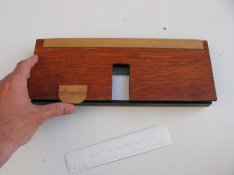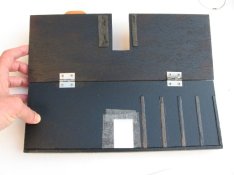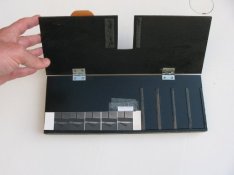very good, John. Using the clear film is a great test for black. I use that for making proof sheets exactly at the right time. The edge of the film is not visible in the black at the center of the field, but is just visible in the corners, since the center is the brightest part of the field. That way, I know that I've exposed enough, but not too much. Of course, making proofs is one thing, prints another.
Regarding your observation (BetterSense) I very rarely need to make more than one or two changes. I think that when I threw out the graduated strip, I very quickly learned to identify how much to change the exposure to get what needs getting. When I was freelancing for a magazine, I would get these huge print orders that needed to be done yesterday, and I used this method. It can become incredibly fast.
My approach over the years has changed quite a lot (I was a beginning photographer reading Popular Photography when I heard the news of JFK being assassinated). For a long time I struggled like everyone does, and going to school didn't help. At some point, and I don't remember when that was, I began to understand that if I shifted my focus from solving problems to training my intuition, decisions would make themselves and I could work with a lot more fluidity. I guess this happened when I was shooting for the magazine, because the pressure could be pretty high and stuff needed to happen fast.
So here's a hint if you find this interesting. Make a print that you think is just right. Make two more, only changing the exposure, keeping everything else the same. On one, give it 1/2 as much exposure. On the other, give it twice as much. Keep these for reference. They will show you how much one stop of difference in both directions makes.
If you like this, then try the same with contrast. To do this, you will need a subject that has a good detailed white. You'll need to get the white the same in three prints each made one contrast grade apart, the middle grade being the one you can accept as a standard.
Training the intuition really works, but only if you approach it with something very much like the scientific method. Only ONE variable at a time. I'm guessing that if you do these exercises and study the results, you will be amazed at how fast and accurate your decision process will become. Of course, experience will accomplish the same thing over a long time, but by devising experiments like these, the amount of time it takes can be shortened drastically.














